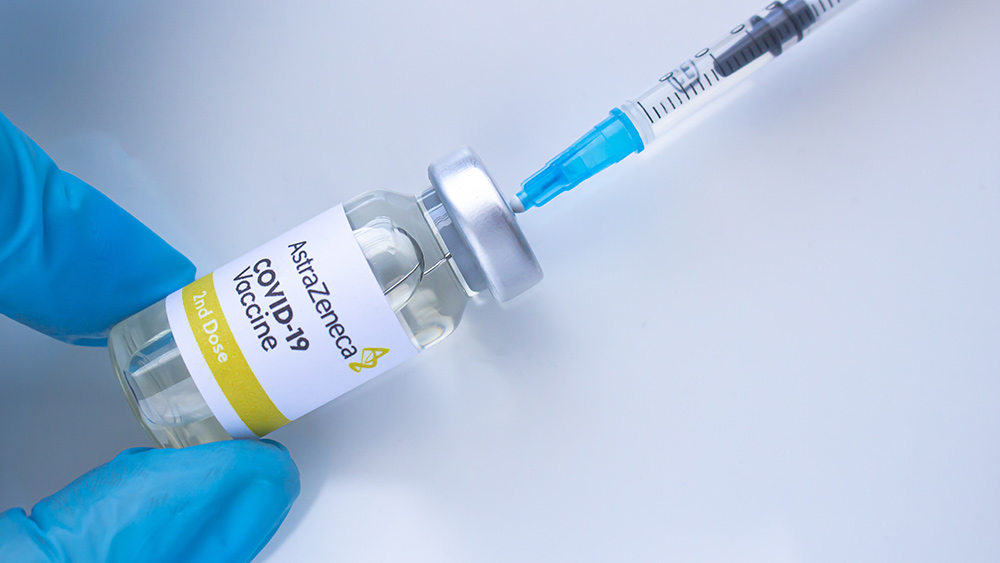 Parler
Parler Gab
Gab
Health risks linked to common food dyes
Several food dyes have already been banned because of the health problems associated with them. But some are still permitted by the FDA. According to research, some of these food dyes, like Red No. 3, can damage DNA in human liver cells and disrupt the function of the thyroid. Parents should also think twice when buying groceries because children who consume food with Red No. 3 are at greater risk for a lifetime of health problems. Additionally, children's foods often have the most dyes in them. Michael F. Jacobson, CSPI's executive director, warned that food dyes are synthetic chemicals that do not improve the nutritional quality or safety of foods. Instead, these dyes only "trigger behavior problems in children and, possibly, cancer in anybody." The FDA has not done much to eliminate Red No. 3 from the food supply. The agency recognized its potential to cause cancer as early as 1985, and banned it from any products that go on the skin. However, food dyes are still being used in foods and many of Big Pharma's medications. In September 2012, the International Journal of Occupational and Environmental Medicine reported that Red Dye No. 3 causes cancer in animals, which suggests that the same thing could happen to humans. Data also suggests that some dyes consumers are often exposed to are carcinogenic. Yet, pressure from the food additive industry keeps the FDA from banning these dyes altogether. Data from the journal Food and Chemical Toxicology revealed that certain consumable dyes can harm the pituitary gland and sperm in humans. This means food dyes can harm your mental and physical health, as well as your reproductive health.How to protect your family from harmful food dyes
Red No. 3 (erythrosine) is a cherry-red coloring that is often used in candy, popsicles and cake-decorating gels. Meanwhile, Red No. 40 (Allura Red) is a dark red dye that is used in candy, cereals, condiments and sports drinks. It is made from petroleum and is approved by the FDA for use in foods and drinks. According to research, artificial food dyes are linked to hyperactivity, including attention deficit hyperactivity disorder (ADHD). Some studies have also suggested a connection between the consumption of products with food dyes and increased ADHD or hyperactivity in children. Foods that contain red food dye Red dye 40 is one of the most popular color additives. Most food products that come in a package are processed and often contain food dyes such as red dye 40. When buying groceries, check the ingredients list for red dye 40, which can also be listed as:- Red 40
- Red 40 Lake
- FD&C Red No. 40
- FD&C Red No. 40 Aluminum Lake
- Cakes and frosting
- Candy and gum
- Cereals
- Chips and salty snack foods
- Energy drinks
- Gelatins
- Ice cream
- Pastries
- Popsicles
- Protein powders
- Puddings
- Soda
- Sports drinks
- Yogurt
Side effects of red dye 40
It can be hard to determine the exact cause of certain side effects because red dye is commonly used with other food additives that may also lead to symptoms. Potential side effects of the food dye may include:- Allergic reactions
- Behavioral changes like irritability and depression
- Hives and asthma
- Hyperactivity, including ADHD
- Migraines
- Skin irritation
- Sneezing
- Watery eyes
Does your child have a red dye allergy?
If you suspect that your child has a red dye allergy, screen for red dye 40 intolerance at home. First, try eliminating all foods with red dye 40 for one or two weeks. This can result in an improvement in behavior. However, it might be hard to confirm how the dye affects your children until you reintroduce foods containing the dyes and observe their reactions. Remember that medication for children, like chewable tablets or liquid cough syrups, can also contain food dyes. To avoid the dyes, opt for dye-free versions. These dangerous food dyes are in too many products that both children and adults consume, yet most consumers don't think twice about consuming or using them. Take action now and protect your loved ones from the health problems linked to food dyes like cancer before it's too late. Watch the video below to know more about the dangers of eating foods and medications that contain food dyes. This video is from the Take Control of Your Health! channel on Brighteon.com.More related stories:
Combined natural colorants can replace harmful artificial food colorings (AFCs), reveals study. Grape skins can be used as natural food colorant. Natural pigments are a safer alternative to harmful artificial food colorings (AFCs). Sources include: NaturalHealth365.com Healthline.com Health.ClevelandClinic.org Brighteon.comDamaged patients are suing AstraZeneca over covid jab injuries
By Ethan Huff // Share
Human bird flu treatment drug has interesting side effect – it makes people believe FALSE NARRATIVES
By Belle Carter // Share
J&J offers almost $9B to settle lawsuits alleging its talc-based baby powder caused cancer
By Belle Carter // Share
Study: More than half of adults over 40 may have latent heart disease
By Zoey Sky // Share
By Arsenio Toledo // Share
Governments continue to obscure COVID-19 vaccine data amid rising concerns over excess deaths
By patricklewis // Share
Tech giant Microsoft backs EXTINCTION with its support of carbon capture programs
By ramontomeydw // Share
Germany to resume arms exports to Israel despite repeated ceasefire violations
By isabelle // Share










